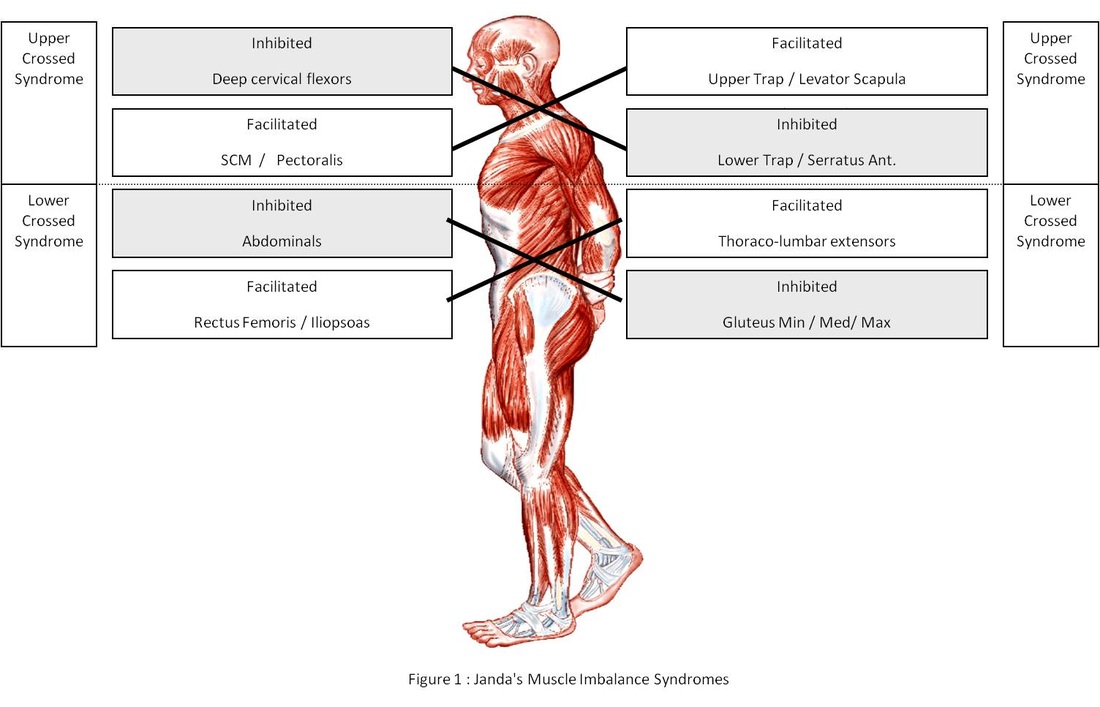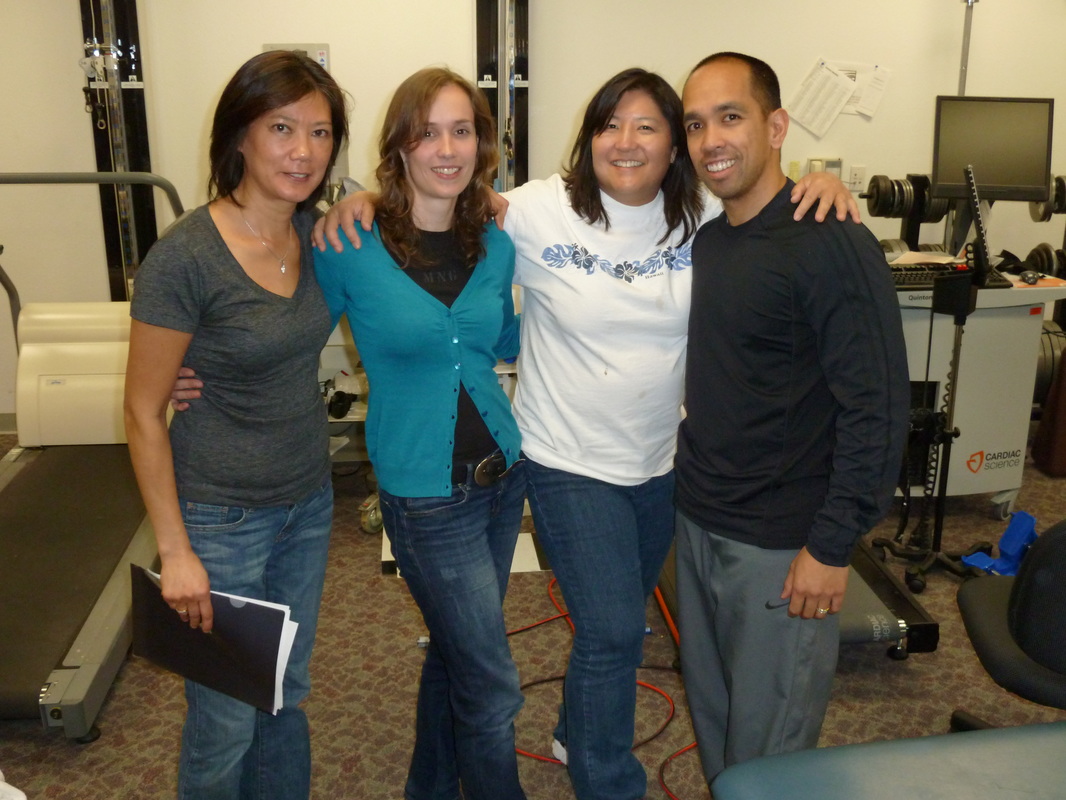|
Highly encouraged by Drs. Liebenson and Weingroff, two well regarded rehabilitation professionals, I had the opportunity to attend the Prague School's Dynamic Neuromuscular Stabilization "A" course this past weekend in Azusa, California. Dynamic Neuromuscular Stabilization, or "DNS" as it is commonly referred to, is a manual and rehabilitative approach to healthcare grounded in the scientific principles of developmental kinesiology. One of the key tenets of this approach is the activation of the "integrated stabilizing system" in order to facilitate optimal functioning of the locomotor system. This particular course was primarily instructed by Clare Frank, co author of "Assessment and Treatment of Muscle Imbalance" and Prague-based physiotherapist, Lucie Oplova. As I mentioned above, this approach to rehabilitation focuses primarily on the activation of the integrated stabilizing system of the spine. That is, the short intersegmental spinal muscles, the deep neck flexors, the diaphragm, the abdominal wall, and the pelvic floor. Many of you may be familiar with the research from Australia indicating the importance of a "feedforward mechanism" for spinal stabilization, and while we may not be convinced of the Transversus Abdominis in being the only important muscle for such mechanism, this approach views the relative interplay of the above musculature as being integral in the stabilization of the spine. In fact, even more important may be the control via the central nervous system (CNS). Postural ontogenesis and developmental kinesiology, or the development of muscle function for short, is directly related to CNS maturation. The absence of such maturation or the presence of its disturbance, forms the basis for such neurological pathologies as cerebral palsy. Such conditions typically manifest itself in predictive (aka not random) presentations, resembling functional musculoskeletal pathology we are so commonly familiar with in the modern day lifestyle. As a result, it seems evident that the majority of the dysfunctions we so commonly see may be more related to higher level central nervous system functioning than we give credit to. Therefore it is important that rather than taking a local approach to "muscle activation", we must take a higher approach of CNS engagement. In doing so, we must also pay attention to muscle coactivation patterns such that the optimal balance of said patterns results in functional joint centration. Joint surfaces that are well balanced ensure maximum load bearing is possible. Note: This likely goes hand in hand with individuals who have difficulties performing the squat maneuver. Commonly we think of a "tight this" and a "weak that" but far too often we fail to realize that this dysfunction may simply be a de-centration of joint surfaces and subsequently, the brain telling that individual that perhaps he or she should not be performing a squat until such joints improve their dynamic positioning. Absolutely muscles are under complete control by the brain but how often is the central nervous system our area of corrective focus? Therefore, optimal muscle functioning will shape structural maturation (think denerative joint disease) and optimal muscle functioning is based on central nervous system maturation. Remember that the CNS is plastic (or elastic for those of you familiar with Lorimer Moseley) so while someone may have experienced (perceived) optimal development it certainly does not immunize them from dysfunction later in life. Program (CNS) - Function (muscle) - Structure (bones, joints, etc) For those of you familiar with movement patterns, according to the DNS approach they are simply a window to examining what occurs at the CNS level. Think about it, problems that we commonly see generally resemble primitive patterns. (Think protective guarding after a shoulder injury). Since such postural and functional pathologies mimic developmental maturation and insufficiency and since developmental kinesiology follows a system of sagittal stabilization prior to frontal and transverse stabilization, then it seems reasonable to follow this approach from a rehabilitation and training perspective. And so while the DNS approach attacks active exercise in three critical positions...
...it is prudent that we take the same approach in the methods we employ. This in fact is one reason why I have incorporated the SFMA approach in practice. But for those of you familiar with the SFMA, the DNS system fits in quite well, especially in those cases where your patients suffer primarily from a fundamental stability deficit. Heck, I’d even be so bold to suggest that the DNS system would fit quite well in the corrective strategies of the FMS. Say it with me; “Proximal stability for distal mobility”
This does not mean that we must take a mobility problem to a stability fix. Dr. Weingroff states this clearly in his DVD. But optimal (local) mobility will precede optimal (local) stability. And optimal (proximal) stability will facilitate optimal (distal) mobility. But we do have choices. If integrated spinal stability is warranted, we can train it with any means we choose. We can train the ISS in any of the three suggested DNS approaches. We can train the ISS in the most dysfunctional, non-painful movement pattern. We can train the ISS in 1’s and the asymmetries. We can train the ISS in the McGill Big 3. And the list goes on and on. Just remember, as soon as you have it, you must move on to the next pattern. Go after it. Get it. Move on. In hearing about the DNS approach, you may have come across discussions pertaining to reflex stimulation. It should be stressed that reflex stimulation is only a part of DNS. Reflex stimulation (aka the voodoo) is simply a technique utilized to elicit pre-programmed movement patterns and achieve joint centration. As with other manual therapies, reflex stimulation can be thought of as rebooting the system. CTRL - ALT - DEL. But what about training the brain? I have mentioned this before and I’ll mention it again. In order to access cortical plasticity, the individual must perform the most appropriate exercise along the specific corrective continuum that is most challenging but also one that they can still perform quite well. This is training the brain. So reflex stimulation can be thought of as the jumper cables and active training of the most difficult yet appropriate exercise that they can perform well is letting the car run after the jumpstart. Click here to watch an introductory video on DNS "Zones of Support" and the "Punctum Fixum" as taught by the DNS are the specific areas where movement begins. The direction of muscle pull, in general, project toward these regions and the choices of support zones that our body makes depend on the initial position of that body. Thus, such "fixed point" will be dictated by whether a specific movement pattern is of the open chain or closed chain varieties. Additionally, as Dr. Kolar states in Dr. Liebenson's text, "Rehabilitation of the Spine", “The muscle may not be weak in itself, but it may not function well because its attachment point is insufficiently fixed. A muscle must have a punctum fixum.” Finally, one of the concepts of this approach that I felt was of great importance was the test and re-test. The identification of the faulty movement pattern, the correction, and the subsequent reassessment. This is the clinic audit process. Because as Karel Lewit states in his text, "There is no clinical field in the whole of our experience in which the purely clinical examination plays such a decisive role..." I cannot thank Drs. Liebenson and Weingroff enough for recommending this course, especially under the tutelage of Dr. Clare Frank. I have read Dr. Kolar's chapter in Dr. Liebenson's text, have looked at the literature on the Prague School website, and was introduced to some of their testing methods at Dr. Liebenson’s course. Yet while the information learned over the weekend was still relatively novel, at no point did I feel lost. The information was well presented and I cannot wait to integrate this approach into my current regime of care. Instructors: Clare Frank, Lucie Oplova, and Kathy Kumagai
0 Comments
Leave a Reply. |

